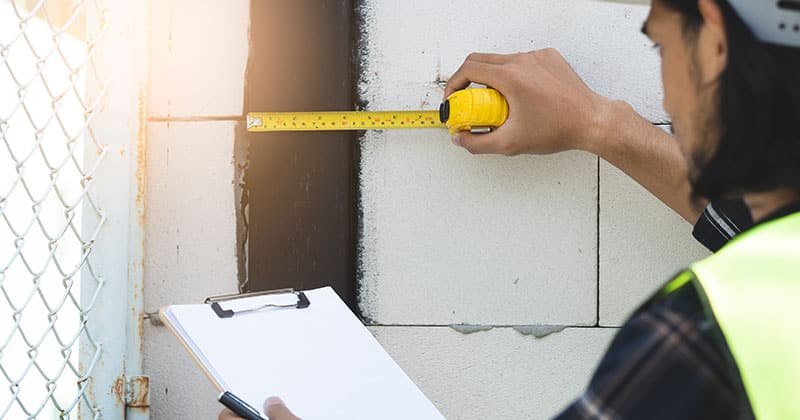Construction Take-Off Guide: Master Material Quantity & Cost Estimating

In the construction industry, **continuous learning** is always a smart idea. Whether you’re a seasoned veteran or just starting, you’ll always find ways to improve your process and save time—which often means avoiding costly return trips to the job site. 👷♂️
The margin for error in construction is tiny. A single incorrect measurement can quickly erode your profit margin or cause significant delays. This is where the **Construction Take-Off Guide** becomes essential.
What exactly is a **quantity take-off**? It’s the process of figuring out *exactly* what materials a job requires—nothing more, nothing less. This guide will walk you through the practical steps of performing a takeoff, explain its connection to your final quote, and demonstrate how software can save you countless hours.
If you’ve ever found yourself guessing quantities, underquoting prices, or dealing with unexpected material shortages, this guide is for you.
What is a Construction Take-Off?

Have you ever ordered materials only to realize you forgot to account for the necessary cut-outs or a specific architectural detail? That’s why an accurate take-off is so important.
A **construction take-off** is a vital part of the overall estimation process. It’s the step where you identify the precise materials you will need to complete the task and determine the quantity of each. You can work from blueprints, digital PDFs, or even a sketch, but the goal is always the same: to answer specific quantity questions:
- How many square feet of **drywall**?
- How many bundles of **shingles** or roofing material?
- How much **lumber** for the framing?
- How many linear feet of **baseboard or trim**?
An accurate take-off helps you protect your profit margins and provides your customer with a reliable, transparent quote. This confidence leads to a smoother construction process and fewer surprises down the line.
How to Perform a Quantity Take-Off

Before you can price a job, you must know what the job demands. The take-off is the essential first step for accurate estimating.
Step 1: Review Project Plans Thoroughly
Start by carefully reading every document: floor plans, elevations, notes, and specifications. You’re looking to define the **scope of work** and spot any potential surprises, like unusual angles or non-standard dimensions. Always check the documents yourself; don’t rely solely on verbal instructions from the client.
Step 2: List All Required Materials
Walk through the project logically from beginning to end. Create a comprehensive list of everything required. This includes:
- Lumber & Framing
- Drywall & Sheathing
- Trim & Finishes
- Fasteners & Adhesives
- Tile & Flooring
- Fixtures & Fittings
- Paint
Consider breaking the list down by trade or phase (e.g., ‘Framing Materials,’ ‘Finishing Materials’). **If it goes into the job, it must go onto the take-off list.**
Step 3: Measure Components Accurately
Using the scale on your plans (or digital tools), measure the areas, lengths, and volumes you’ll be working with:
- **Square Footage** (floors, roofing, walls)
- **Linear Footage** (trim, piping, wiring)
- **Cubic Yards** (concrete, excavation)
Precision here saves money and hassle later. Don’t forget to factor in a sensible amount of waste—a small amount is wise, but too much wastes your client’s money (and potentially yours).
Step 4: Calculate Final Product Quantities
Convert your measurements into the actual number of products needed. For instance:
- 1,200 sq. ft. of flooring might convert to **35 boxes of plank** (including a waste factor).
- 300 linear feet of baseboard might be **30 ten-foot sticks**.
- 80 sq. ft. of tile backsplash might require **100 tiles plus 10% waste**.
This transforms raw numbers into an actual purchase order. **Double-check your math** to avoid transposing numbers or forgetting the waste allowance.
Step 5: Determine Material Costs
Price out every single item using your current supplier rates or material database. Include all associated costs like fasteners, adhesives, and delivery fees. This step forms the core financial data for your quote.
Step 6: Cross-Reference Against the Scope of Work
Compare your complete take-off and pricing list against the customer’s written scope or the original bid requirements. Does everything align? Note any discrepancies early on, such as if the client mentioned “high-end fixtures” but the plan specifies “builder’s grade.”
Step 7: Add a Contingency for the Unknown
Especially for renovation or insurance repair projects, it’s smart to include a contingency element. Unexpected site conditions are common. A **5-10% contingency** covers you without surprising the client, provided you communicate this cost transparently.
Take-Off vs. Estimate: Understanding the Difference

The terms “take-off” and “estimate” are often confused, but they serve different purposes within the workflow. You give the **estimate** to the customer; it’s the total price they agree to pay.
As the Construction Management Association of America (CMAA) notes, *“Construction estimation is the process of evaluating all costs associated with a specific building project. The costs generally include direct and indirect expenses, overhead, and the general contractor’s profit.”*
The **take-off**, on the other hand, is simply your detailed list of materials. It’s the core input you use to build that final estimate.
Key Differences
| Feature | Take-Off (Quantities) | Estimate (Cost) |
|---|---|---|
| **Focus** | Number of materials | Total job price |
| **Used By** | You and your crew (for ordering) | You and your customer (for contracting) |
| **Includes** | Materials only (e.g., 24 sheets of drywall) | Materials, Labor, Overhead, and Profit Margin |
Benefits of Using Take-Off Software

Software makes the material take-off process much faster and less prone to costly mistakes. The benefits are significant:
- **Accuracy:** Software allows you to measure directly from digital plans. The program automatically calculates square, linear, and cubic totals as you mark up the drawing, drastically reducing human error.
- **Speed:** Most digital tools cut the time spent on take-offs in half. You can click and calculate quantities in minutes instead of hours, meaning you can deliver more quotes faster.
- **Consistent Costs:** You can create a master catalog of standard materials and rates. This ensures your numbers are consistent across every job, no matter which team member prepares the quote.
- **Time Savings:** Once templates and data are saved, the benefits compound. You move seamlessly from plan to estimate, freeing you up to focus on the next job instead of tedious calculations.
4 Tips for Selecting the Right Take-Off Software
Ready to upgrade your estimating process? Here’s what to look for in a great take-off program:
- **Plan Integration:** Choose a program that easily allows you to upload and scale blueprints, PDFs, or digital drawings.
- **Robust Measurement Tools:** The best programs allow quick, easy area calculation simply by tracing or clicking points. This is where you gain a real edge in speed and precision.
- **Suitability for Your Work:** If you do residential or small commercial projects, choose a tool designed for that scale, not one built for massive structures. Simpler tools often work better for smaller margins.
- **Integration with Your Estimating System:** Ensure the take-off software can quickly transfer quantities to whatever platform you use to build and send final quotes. This keeps your entire workflow reliable.
Construction Quantity Take-Offs – COMPLETE Guide – YouTube
For more in-depth training on this topic, watch this Construction Quantity Take-Offs – COMPLETE Guide. This video offers a full guide on how to calculate all the key quantities you need for a construction project, which directly supports the steps outlined in the article.
Frequently Asked Questions (FAQ)
Q: What is the biggest risk of a bad take-off?
A: The biggest risk is an **inaccurate quote**. If your material quantities are too low, you absorb the cost difference, reducing your profit. If they’re too high, your quote will be non-competitive, or you’ll waste money on excess materials.
Q: How much material waste should I factor into my calculations?
A: The waste factor varies by material and trade. General guidelines are typically **5% for simple materials** (like dimensional lumber) and **10-15% for complex materials** (like custom tile layouts, roofing, or drywall). Always check with your supplier or experienced tradespeople for specifics.
Q: Can a take-off be done on-site without plans?
A: Yes, but it’s called a **field measure** or **site verification**. For remodels or repairs without blueprints, the take-off process starts by physically measuring and documenting all dimensions and existing conditions on the site before calculating quantities.
Further Reading and English Resources
- Profit Margins: What They Are, How to Calculate Them, and Why They Matter (Investopedia)
- Construction Industry Statistics and Facts (Autodesk Construction Cloud)
- Construction Estimating Guidelines (Construction Management Association of America – CMAA)
- Overhead Costs: Definition, Examples, and Calculation (Investopedia)














